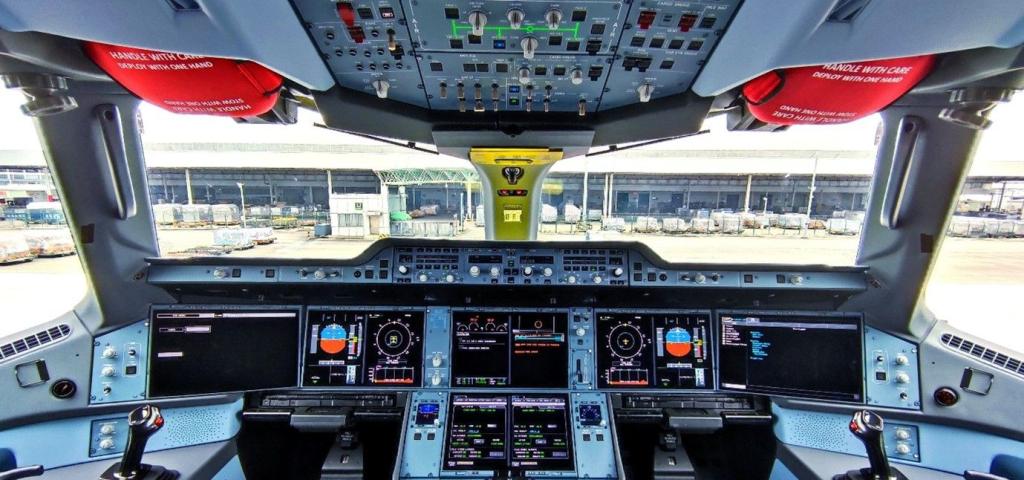
Would you trust an Artificial Intelligence (AI) aircraft pilot?
Last week, I attended the Aerospace Tech Week Europe 2023 conference in Munich, which included numerous keynote talks and avionics session tracks on industry challenges, regulations and technology trends. One of the recurring themes of particular note was the role of artificial intelligence (AI) in aerospace systems, in both ground systems and avionics systems. Although the aerospace industry is taking careful steps in adoption of AI, it made me ponder the following question: Would I be willing to fly on a passenger aircraft with an AI pilot instead of a human pilot?
Although this is unlikely to be a decision which many of us will face in the short term, it’s not beyond the realms of possibility in the medium to longer term. It’s an area that has received serious thought – consider the fact that Canada and Japan presented a working paper at an International Civil Aviation Organization (ICAO) meeting in 2022 on use of Remotely Piloted Air Systems (RPAS) for cargo transportation.
The airline industry lost a huge number of pilots and experience due to redundancies and retirements during the COVID-19 pandemic, and the industry is facing an ageing workforce and struggling to recruit and train pilots fast enough to keep pace with the growth in air travel demand.
ICAO sets the regulations for commercial aircraft, including those which require multiple pilots. However, some airlines now want to start flying with just one pilot instead of two, and many countries are now asking for a change in the rules (Euronews, 29 November 2022).
The aerospace industry and regulatory authorities are discussing ways to enable single pilot operations (SPO) which could start as early as 2027 and would help mitigate the shortage of pilots. However, if the human pilot were to become incapacitated during flight, which has become a more frequent occurrence in recent times (Aero News, 26 March 2023), would you rather an AI pilot take over control of flying the aircraft, or would you prefer air traffic control (ATC) to fly it remotely instead?
In general, this is a question to ponder for the longer term, as today the aerospace industry is developing AI systems to analyse vast amounts of flight data and present an intelligent summary to enable a human pilot to make informed decisions and reduce their workload. Work is also ongoing to use AI to improve decision-making in aircraft collision avoidance systems (and was presented at Aerospace Tech Week conference).
The European Organisation for Civil Aviation Equipment (EUROCAE) and SAE International are collaborating through joint working group EUROCAE WG-114 / SAE G34 to establish common standards and guidance to support the development and certification of safety-related systems which utilize AI technology. It would seem to be extremely difficult, if not infeasible, to certify an AI system to current avionics safety certification standards including ARP-4754A, ARP-4761, DO-178C and DO-254. However, could the use of an AI system under the control of a safety-certified ‘traditional’ software and hardware system (known as constrained AI) be a sufficient answer, or will a human pilot still be required to confirm the AI’s analysis and associated call for action?
Some of the latest generation modern passenger aircraft already have Autopilot systems which are capable of taxi, take-off and landing (New Atlas, Aug 2020). In the coming years, we can expect that the aerospace industry will gain a great deal of AI experience developing AI-based advisory systems, AI co-pilots to reduce the workload of human pilots, and even AI-based autonomous systems which may be deployed first in Urban Air Mobility (UAM) systems.
So, as we look towards the future, perhaps that passenger aircraft flight with an AI pilot might not seem quite so daunting?


